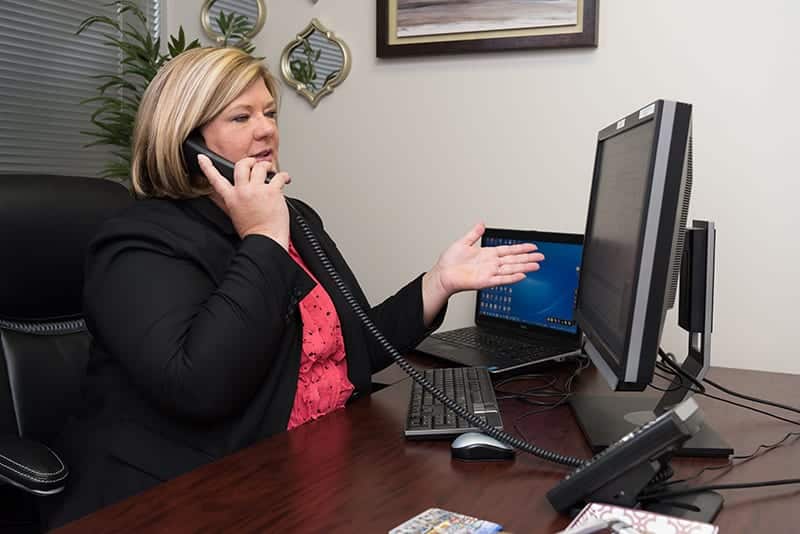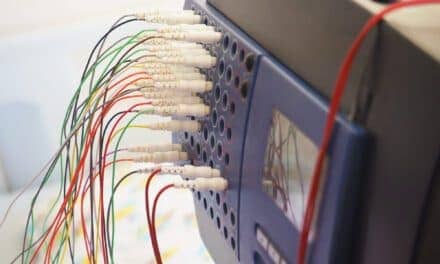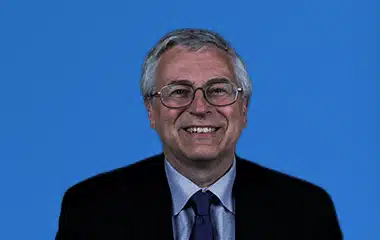Laura Linley, CRTT, RST, RPSGT, shares insights on the evolving roles of sleep technologists. Her flexible day-night work schedule gives her a unique vantage point to the transitioning responsibilities.
Healthcare in general has been evolving in recent years, and sleep medicine specifically has been changing even more rapidly than many other fields. As part of this transition, the sleep technologist who focused solely on acquisitions is largely history. Sleep techs today must cultivate a wider skillset than those of the past, ranging from patient education to liaising with payors to supervising in-lab sleep studies with patients who have multiple comorbidities, as well as adapting to other evolving needs.
Despite these changes, or perhaps because of them, Laura Linley, CRTT, RST, RPSGT, is one of the sleep technologists who has thrived in the profession for more than 25 years. Her sleep career started in 1989 when she was invited to help establish a polysomnogram program of the respiratory therapy department of Rockford Memorial Hospital. So, after beginning her healthcare career as a respiratory therapist, she started in sleep as a polysomnographic technician. “This role was unique as I was working alongside my colleague Diana Holton, and we would split shifts to allow us both to continue our work in the respiratory department as well,” Linley says.
These days, Linley is the vice president of clinical operations at Advanced Sleep Management, LLC in Dallas, which she also cofounded. She is also president of the American Association of Sleep Technologists (AAST).
At Advanced Sleep Management, Linley works a flex day/evening schedule, a sign of the times. “Typically, I work 8 am to 6 pm, and then will flex my time and start the day later when visiting our sleep labs to work with the night staff 10 am to 9 pm,” she says. “I feel it is important to me to be able to touch base directly with the night staff and not just rely on e-mail correspondence. I contribute the longer hours to my ownership responsibilities.”
A typical day for Linley includes:
- Research on evolving roles to better understand potential new revenue drivers and how the company can incorporate services to support its hospital-based sleep centers.
- Being involved in all areas of the sleep programs and the corporate offices. “I work with hospital administrators, as well as with our management, clinical, and front office support teams,” Linley says. “I liaise to explain needs, improve clinical quality, and increase growth.”
- Managing all staffing needs, including hiring, training, evaluation, review, and time reporting.
- Overseeing policies and procedures, quality improvement programs, and ensuring that accreditation standards are met.

Laura Linley, CRTT, RST, RPSGT, has thrived as a sleep technologist for more than 25 years. She is currently VP of clinical operations of Advanced Sleep Management, LLC, where (above) she and sleep tech Shonda Dickerson discuss the features of a PAP interface.
Sleep Review recently conducted an e-mail interview with Linley to share insights gleaned from her career.
Sleep Review (SR): What do you like best about being a sleep technologist?
Linley: As a respiratory therapist, I worked in a fast-paced critical care environment. So much of what I dealt with was making patients comfortable during their disease progression. I find that being part of an integrated care plan in sleep medicine provides a different kind of reward. I can see that our work in getting the patients approved for testing (which is no easy task), working with them at night, and managing their journey with establishing their home therapy plan results in patients experiencing true quality of life improvement. So many of our patients become our “fans” for life!
SR: What do you like least about being a sleep technologist?
Linley: You would think that the flex hours would be the thing I like the least, but actually it is the constant need to review and respond to the economic factors that are keeping patients from getting the care they need and the subsequent financial pressure on the business of sleep medicine.
SR: Please briefly describe how you have seen the role of the sleep technologist evolve from when you first started to today.
Linley: The sleep technologist role has evolved to not only include the comprehensive evaluation and treatment of sleep disorders but also to include comprehensive patient care and direct patient education. Sleep technologists need to understand the medically complex patient and advanced therapy interventions.
[metaslider id=158375]
SR: How has your personal career evolved from when you first started to today? How much of your career path do you think is reflective of the overall evolution of the sleep technologist’s role?
Linley: Personally, my work in sleep has given me the greatest opportunities both in my clinical role and with new business opportunities. I have been part of the evolving industry for almost 30 years now.
When I first started, I was setting up a new service model and was able to work directly with physician and administrative colleagues; I was fortunate to feel part of a team. We would literally debate the presence of a K-complex or the length of a respiratory event. I continue to look to those colleagues as well as to industry leaders for that mentoring (and occasional debate); I have to say that I have not been afraid to do the work, take on new roles, or learn how to become relevant with new program opportunities. My opportunities include working as a lead technologist and helping several sleep centers obtain accreditation status. I cofounded and worked as president for Midwest Sleep and Neurodiagnostic Institute (MSNi), where we developed education programs for sleep center managers, physicians, and sleep technologists. I was asked once what gave me the authority to teach, and my reply was simple: because I have a passion for it! That passion for teaching sleep is something you will see echoed all across the industry. What happens in sleep is so cool…you have to talk about it! I have also worked within the industry as a consultant, sales territory manager for both sleep diagnostic and therapy systems. My current work as cofounder and administrator of sleep management programs is really a result of my past experiences.
Personally the opportunity to work as a sleep technologist kept me working in healthcare. When my daughter was diagnosed with brain cancer in 1989, I found myself at a loss on how to continue to work with the critical care demands of a respiratory therapist. The opportunity to help develop a sleep program truly was the window that opened for me when a door closed. Becoming a volunteer with the AAST has helped round out my professional experiences as well as given me the opportunity to give back. The AAST has opened my mind to industry practices around the world and has allowed me to directly network with industry founders and leaders. I am humbled by being able to work as president for this organization, and I am honored to be part of an organization dedicated to supporting its members by exploring new opportunities for education and defining the expanding role of the sleep technologist.
I do think an “I can do it” work ethic and willingness to be part of an integrated care team is the mark of the professionalism of many sleep technologists; this is made evident by the professional growth our industry continues to experience.
SR: In what ways have these key technologies affected you/your role personally over the years?
Home sleep testing (HST)? Linley: We incorporated home sleep apnea testing (HSAT) into our program 3 years ago. We work in a market where we utilize HSAT testing for those who primarily have an OSA presentation and then we are able to bring positive patients into the center for overnight testing with PAP therapy. It is the best of both worlds; we see patients more accepting to getting a diagnosis with HSAT devices and then getting pretty motivated to come to the center to get the treatment they need.
Autotitrating continuous positive airway pressure (APAP)? Linley: Our physicians do use autoPAP therapy to help patients adjust to home therapy. This has been well-received by our patients and we do see it helping with adherence to therapy.
Electronic medical records (EMR)? Linley: We have had to spend time learning the security and PHI
CPAP compliance apps/websites? Linley: Accessing data with PAP adherence databases is critical in understanding why patients are returning for testing or what barriers patients are experiencing with utilization of home therapy (mask leaks, persistent respiratory events, etc). It’s interesting to see how many of our patients come in knowing this information is available and they are demanding access to adherence data so they can track their own therapy. The immediate feedback patients get on use is truly motivating.
Consumer sleep trackers? Linley: Our patients are coming in with information and awareness that their sleep is fragmented. I feel getting wellness information is important; however, the professional care plan must be the end result. There are times when we have to “unteach” misrepresented information by the fitness trackers. It is interesting to see patients of all ages becoming aware of the value of sleep.
Other relevant technology? Linley: I have had to do quite a bit of research and education to properly understand the algorithm for advanced sleep titration devices available for adaptive servo ventilation and volume ventilation. These newer technologies require an understanding of not only the therapy but also the health conditions present. I have seen an increase in utilization of these therapy options. I find that I need to review the protocols and case studies regularly, not only for myself but for my entire clinical team.
SR: Some sleep techs report that the patients who come in for PSGs today (versus the many who take an HST at home) are the sicker patients with comorbidities or those with mobility issues. Are you seeing this? If so, how have you/your sleep lab adapted?
Linley: We do have patients who have significant health conditions. We have had to look at risk management from a comprehensive viewpoint.
We have regular review of clinical protocols. We have our clinical staff review each patient’s medical history and reason for testing and have given them a pathway to reach out to medical directors for special case protocols prior to the appointment date. We actually track clinical review, as we have found that this review has reduced that urgent call to our medical director for directions on the night of a study.
Our clinical staff also does an introductory call prior to a testing date so that patients can be interviewed for any special needs that were not identified in the physician notes. Our technologists need to reorganize and react to difficult situations and provide care that is appropriate (ASV/O2).
Another thing that we have implemented is a discharge plan for patients. With the use of protocols and physician directives, we speak with patients after their testing to document that patients understand next steps in their care plan.
SR: Have you made any adaptations with regard to the growth in the utilization of oral appliance therapy (OAT) for sleep apnea? For example, do you/your lab do OAT titrations in lab?
Linley: Presently we do not do OAT titrations in the sleep labs. Our local dentists have established protocols for testing and utilize HSAT. We do have a great working relationship between our local dentists specialty trained with OAT and our sleep physician specialists. We have a referral back and forth relationship that is utilized frequently to support our patients. It is an important therapy alternative for our patients.
In a previous role, I not only did in-lab OAT titrations but hired a dentist to work as an independent contractor directly in our sleep center. We had a patient base of about 90 patients who had failed PAP therapy and were happy to have another option to treat their sleep disorders. By working directly with the dentist, we developed titration protocols and worked directly with the dentist in developing specific care plans. Comprehensive sleep programs can certainly benefit from having a dentist involved in both primary and secondary treatment options for sleep apnea.
SR: What are some skills and/or certifications you’ve added on during your career that have proven most helpful to you?
Linley: I have invested in focused healthcare administrative training, and this has helped me round out the management training I have needed to be successful with my management duties. I continue to get as much clinical sleep training as I can, both fundamental and advanced therapy courses.
My career advancement so far has been catapulted by my specialized training and clinical competencies; however, I am quite aware of the need to obtain an advanced degree. I am working towards an associate degree in polysomnography and will continue to get advanced educational degrees.
I encourage all new and practicing technologists to do the same. Allied health work now demands higher education and the on the job training pathway is phasing out. Technologists must obtain and maintain appropriate credentials and meet licensure requirements.
SR: Some sleep medicine professionals say the job of sleep techs is evolving from a night job to a day job. This includes less PSGs at night and more patient education during the day. Is this a trend that you see in your region?
Linley: We have seen a need for highly trained technologists who are willing to add new roles to their work as a nighttime technologist. Our clinical team is crossed-trained to do clinical reviews, patient calls, reviewing referrals for appropriateness and documentation completeness, scheduling, in-lab testing with advanced therapy, HSAT, as well as therapy adherence documentation. Technologists absolutely must pride themselves on competence and willingness to be crossed trained.

Linley (center) poses outside Advanced Sleep Management’s Dallas headquarters with team members Shonda Dickerson (right) and Natasha Miller.
SR: Is it easier or more difficult now to fill job openings for sleep technologists than a decade ago? Why?
Linley: I do recall a time that we hired based on experience of knowing how to do acquisitions. That is no longer the case. Regulatory factors have forced entry-level positions to now require technologists to have skillsets that exceed the minimum. We have to staff to meet those regulatory mandates.
SR: What advice do you have for sleep technologists to thrive in the next 5 years?
Linley: My advice for sleep technologists is to look for opportunities beyond the role of acquisition technologist. I do believe flexibility is key; the hard line of “that is not my job” is not going to help technologist remain relevant in our changing healthcare environment. I encourage technologists to take a hard look at their core competencies. Take advantage of opportunities to interact on a professional level with physicians, other healthcare professionals, and patients to expand your medical literacy to include the ability to explain complex medical issues and therapy objectives.
The sleep technologist of the future will need to be competent with understanding disease management including pulmonary and cardiovascular comorbidities, and this will expand into geriatric and pediatric care. Sleep technologists will need a higher level of education and skill to be competitive in the job market.
I think sleep medicine will continue to be an important role in wellness, and there are many opportunities if we are willing to commit to the education and advancement.
Sree Roy is editor of Sleep Review. CONTACT sroy[at]allied360.com







Great article. Very important point that the ‘Not My Job” attitude has to go. Techs need to be flexible about learning new sills and cross training into other aspects of a team environment.
Great article, you make some very good points. I think is is very important to interact with your patients and do as much education as possible, I have been in sleep over 25 yrs and started out in EEG under a wonderful neurologist, who was very passionate about his work, then went solely into sleep and was a wonderful teacher. Techs these days need to learn early on to be very clear about how they do there jobs and be thorough on doing the best and cleanest acquisition as possible, so a good and accurate study is obtained